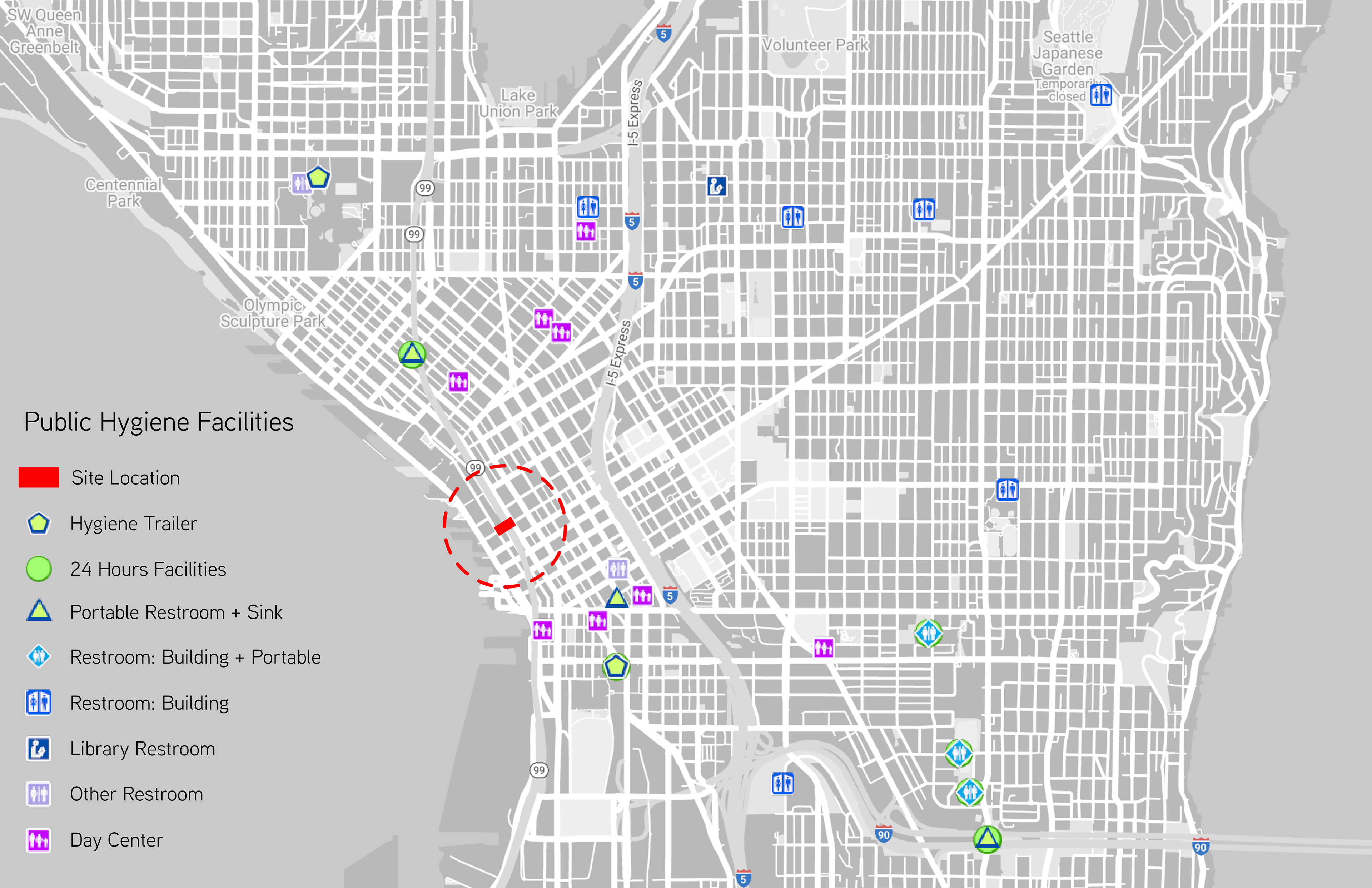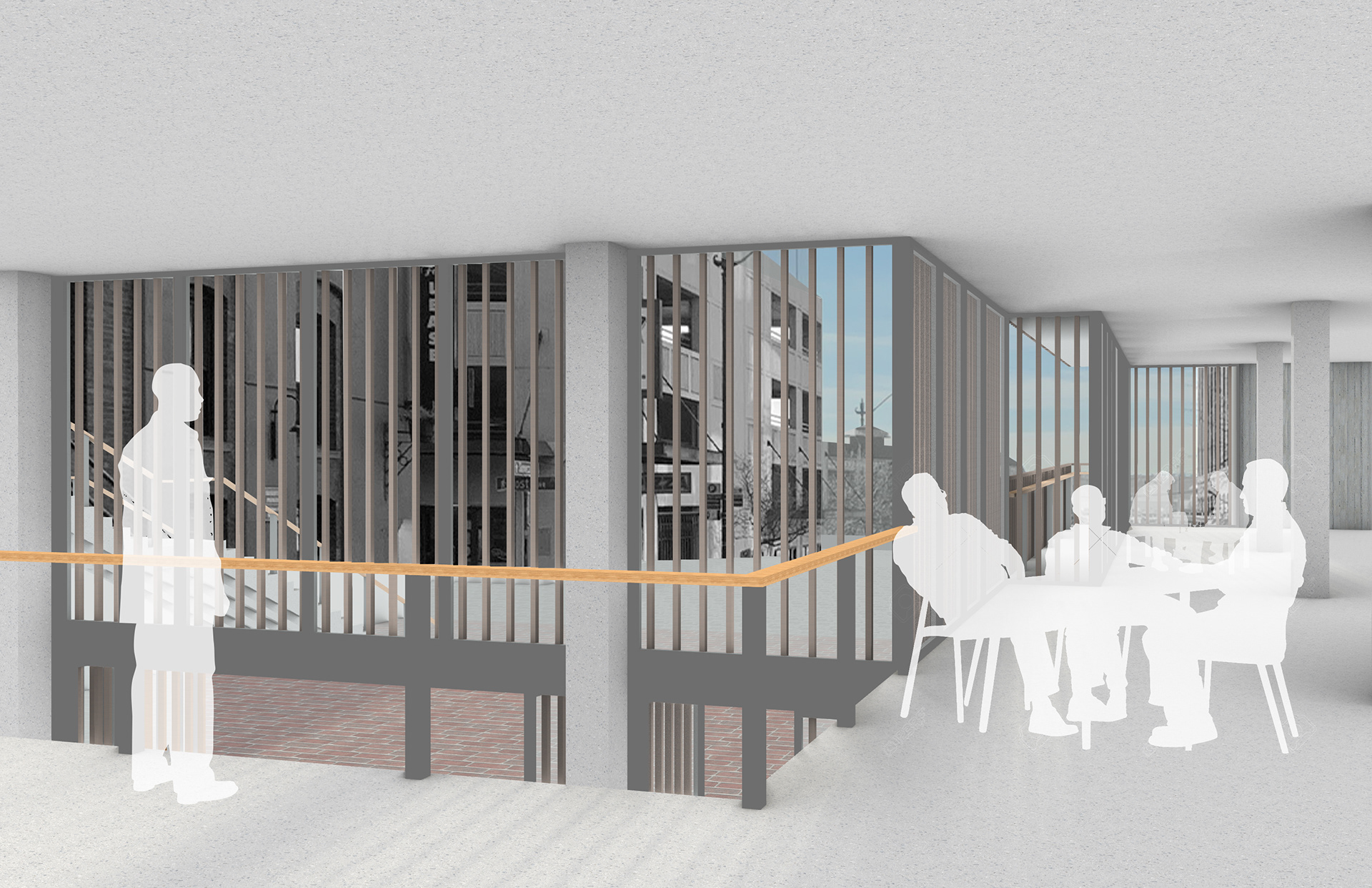Developed with the guidance of:
Elizabeth Golden, University of Washington
Amid the ongoing public health emergency and the COVID-19 pandemic, the unhoused community in the Downtown Seattle area is facing an unprecedented restriction in accessing public hygiene and sanitary facilities. With most, if not all, previously publicly open facilities such as libraries and public restrooms open for the community to use under normal conditions, the pandemic has eliminated these options and put the community in serious physical health condition. There is a tremendous need for a facility that can help provide personal hygiene and sanitary needs as well as support for the community in related services during and post the COVID-19 pandemic. The recent demolition of the Alaskan Way viaduct along the waterfront presents an opportunity for an urban infill project that would help alleviate the health crises of the unhoused community.

Homeless Statistic

Public Hygiene Facilities Diagram

Interorganizational Cooperation

Ground Floor Plan

Second Floor Plan

Third Floor Plan

Site Plan
The project proposed a hygiene and sanitary facility for the unhoused community located by the former Alaskan Way viaduct. The project aimed to address the lack of clean facilities and services for the unhoused community in Downtown Seattle through a temporary structure during the pandemic and later a permanent facility. In addition to hygiene, the proposed permanent facility will also strive to create a public gathering space that promotes interaction and opens a dialogue between the public and the unhoused community to understand the community's circumstances and help contribute toward solutions to the unhoused community's struggles and needs.

Connection Cafe

Second Floor Lounging Space

Laundry Facility Lounging Space

Circulation Diagram

Programs Organization Diagram

Transverse Section
Longitudinal Section




